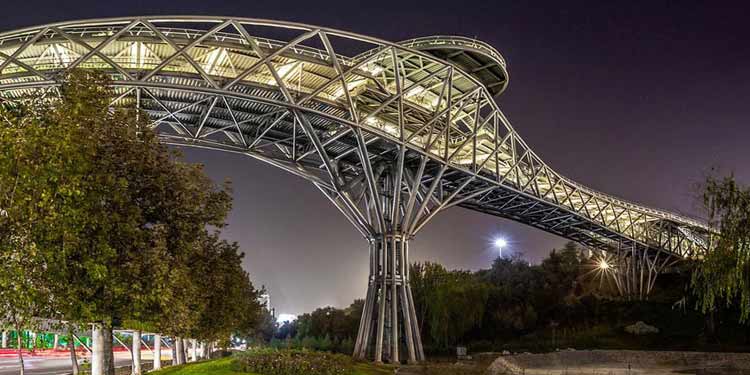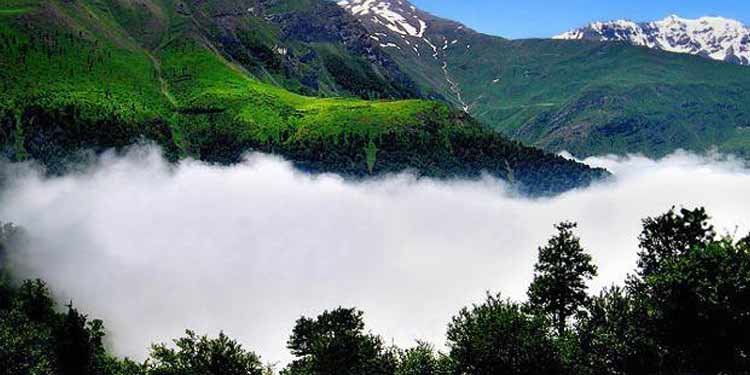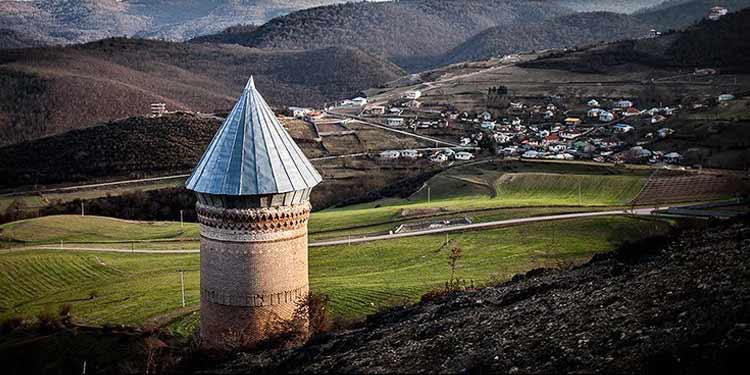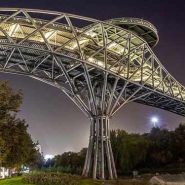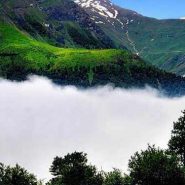Tehran-Kelardasht-Sari-Golestan-Semnan-Tehran
Day 01: Arrival Tehran – Kelardasht (200 Km Drive)
We kindly congratulate you upon your delicate choice! Right on your arrival, we will pick you up at IKA International Airport and we will be picked up by our 4×4 cars for direct drive to Kelardasht, a small town located in northern slopes of Alborz mountain range. To reach here we will drive on a beautiful scenic mountainous road connecting barren slopes of southern Alborz to lush broad-leaf forest of northern Alborz and Caspian Sea coastal areas. En-route we can stop for short birding especially in high altitude of 3000 meters mountain pass to see rock sparrow.
O/N Kelardasht / Hotel
Day 02: Kelardasht
Today is dedicated to less-known Caspian tit. We will drive dirt road in the northern faces of Alborz Mountains surrounding Kelardasht where the oak and scattered hawthorn trees occur in altitudes above 2000 meters; creates the best habitat for Caspian tit. We need the use of our 4×4 cars to reach beautiful upper forest habitats to see this bird in its natural living area. Other birds to expect are Eurasian wryneck, green woodpecker, great, blue, coal and Sombre tit, long-tailed tit, Ortolan bunting and lesser whitethroat.
O/N Kelardasht / Hotel
Day 03: Kelardasht – Rodbarak – Kelardasht
Today we mainly aim to see Caspian Snowcock. This majestic bird lives in very high Altitudes in northern faces of alborz. Also, we will see Ladybird beetle and Bear.
O/N Kelardasht / Hotel
Day 04: Kelardasht – Babolsar – Sari (220 Km Drive)
Morning drive to eastern coastal regions of Caspian Sea near Babolsar to visit small ponds in the shoreline located among rice fields where we have the chance to see black-headed Penduline tits busy weaving the nest in local willow trees during spring.
O/N Sari / Hotel
Day 05: Sari – Miankaleh Peninsula
Miankaleh peninsula is a narrow but long peninsula in Māzandarān Province in the north of Iran situated in the extreme south-eastern part of the Caspian Sea; Miankaleh peninsula is one of the richest ecological havens in West Asia and perhaps in the whole world. It is home to many unique Caspian bird and reptile species native to this region. It’s also a very important internationally recognized refuge for migratory birds such as Coot, purple swamphen, smew, flamingo, white-headed duck, red-breasted goose, and whooper swan. Boujagh National Park This park is limited to Caspian sea from north, to Bandar Kiashahr city from south,to AmirKiasar village and Iran’s radio & Television facilities from east and from west to Oshmak river. This place has been registered as shore& offshore national park in Ramsar convention. amongst its flora species are reed, typha, elderberry, lemna, trapa ( natans), myriophyllum , ceratophyllum, lavender, sporangium, tamarix shrub,adler,pomogronade,bulk of man planted needle-shaped leaves trees such as cedar, and grass coverage including actus and raspberry bushes. Boujagh swamp is of best locations to watch birds. Distinct birds of this region are falcon, different ducks. collaed glareola and a diversity of water fowls and wet land fowls. One of the attractive nesses of this swamp is wooden bridge where is constructed between swamp and sea with 1km length.
O/N Sari / Hotel
Day 06: Sari – Golestan National Park
We will cross to Golestan province. We have many protected areas, wild life reserve and national parks in this area. Our experts will choose one of these sights, which have a good view to the area so we can have our optional walk in the evening and the morning after. There is a high chance of seeing wildlife in these walks. We will do camping on nice view point by the evening.
O/N Golestan / Camp
Day 07: Golestan National Park – Touran National Park
In the morning we drive to touran national park via kiasar and shahrud cities. We are going to spend the next 2 nights in a local house in Qale bala village located in the boundaries of Touran national park/biosphere reserve. Here, you have very chances to see Persian Cheetah. Touran consists of a very vast steppe semi-arid deserts and arid mountains with the artemisia and artemisia-zygophyllum steppes in the north, which is a main habitat for the endemic pleske’s ground jay and asiatic desert warbler. The other birds to expect include black-bellied and crowned sand grouses, desert lark, bar-tailed and crested lark, pale-crag martin, trumpeter finch, steppe gray shrike, Macqueen’s bustard, eastern Olivacious and scrub warbler, desert wheatear, masked wagtail, desert finch, see-see partridge, eastern rock nuthatch and with luck cream-colored courser, hooded wheatear and Upcher’s warbler. Early in the season, common migrants include green warbler and red-breasted flycatchers. We are also anticipating finding rare Onager (known as Asian wild ass) in the southern parts which generally consists of steppe deserts.
O/N Touran / Camp
Day 08: Touran – Semnan
We leave Touran and drive westward to reach the capital. En-route we will stop in some places near Parvar protected area to look for more birds, notably white-throated robin, pale rock sparrow and trumpeter finches. We continue to drive to Semnan for visiting
O/N Semnan / Hotel
Day 09: Semnan -Tehran (520 Km Drive)
We have birdwatching and observing in Parvar and back to Tehran. Tehran is located on the southern slopes of Alborz and on the foothill of 4000 meters Tochal Mount.
O/N Tehran / Hotel
Day 10: Tehran Departure
Today is the last day you are in Iran, There are no activities planned for the final day and you are free to depart at any time. Please note you must check out of the hotel by 12 pm. We directly drive to airport for departure.
Gallery


